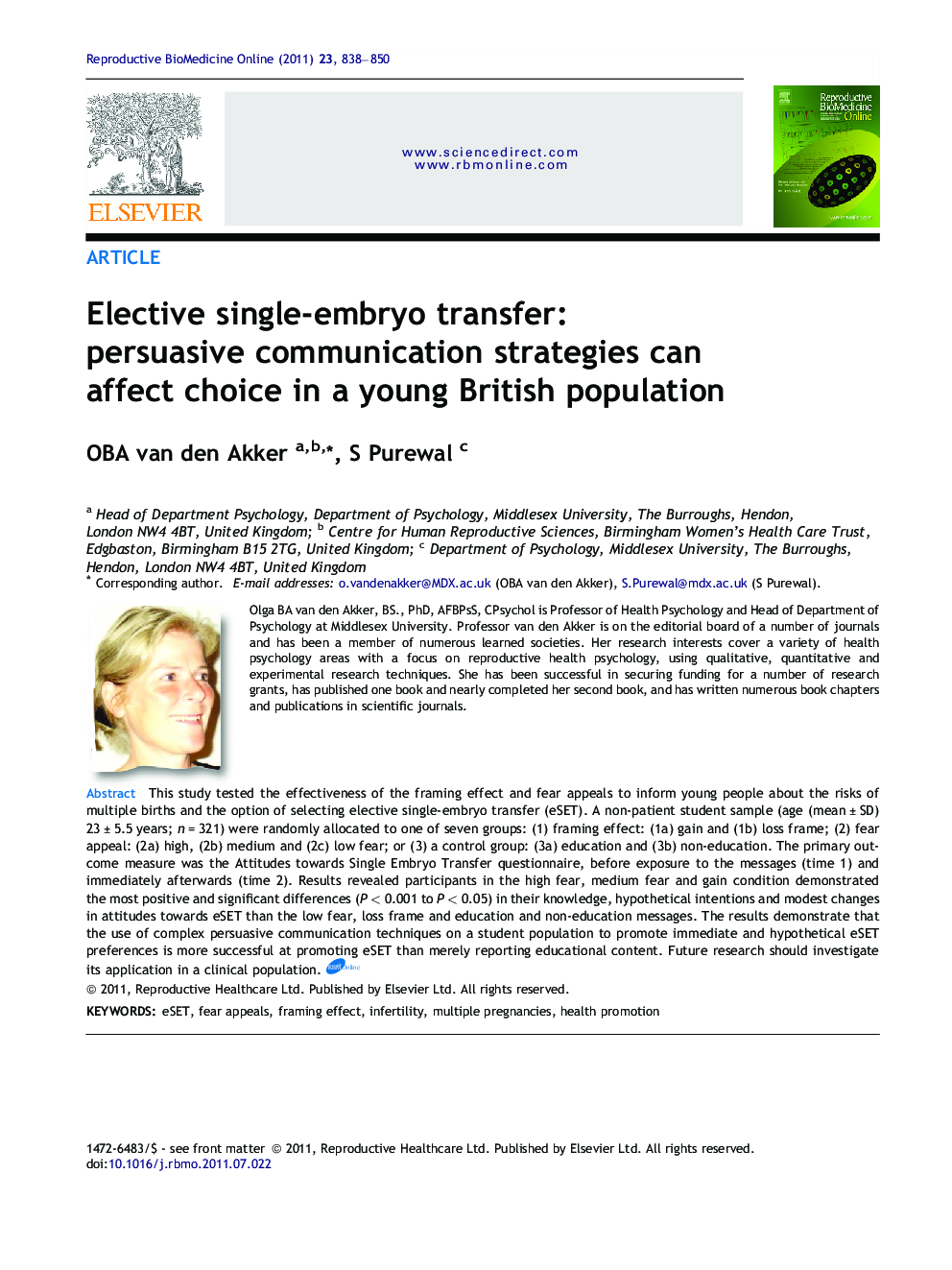| کد مقاله | کد نشریه | سال انتشار | مقاله انگلیسی | نسخه تمام متن |
|---|---|---|---|---|
| 3971158 | 1256751 | 2011 | 13 صفحه PDF | دانلود رایگان |

This study tested the effectiveness of the framing effect and fear appeals to inform young people about the risks of multiple births and the option of selecting elective single-embryo transfer (eSET). A non-patient student sample (age (mean ± SD) 23 ± 5.5 years; n = 321) were randomly allocated to one of seven groups: (1) framing effect: (1a) gain and (1b) loss frame; (2) fear appeal: (2a) high, (2b) medium and (2c) low fear; or (3) a control group: (3a) education and (3b) non-education. The primary outcome measure was the Attitudes towards Single Embryo Transfer questionnaire, before exposure to the messages (time 1) and immediately afterwards (time 2). Results revealed participants in the high fear, medium fear and gain condition demonstrated the most positive and significant differences (P < 0.001 to P < 0.05) in their knowledge, hypothetical intentions and modest changes in attitudes towards eSET than the low fear, loss frame and education and non-education messages. The results demonstrate that the use of complex persuasive communication techniques on a student population to promote immediate and hypothetical eSET preferences is more successful at promoting eSET than merely reporting educational content. Future research should investigate its application in a clinical population.A multiple pregnancy is a health risk to both infant and mother following IVF treatment. The aims of this study were to test the effectiveness of two persuasive communication techniques (the framing effect and fear appeals) to inform young people about the risks of multiple births and the hypothetical option of selecting elective single-embryo transfer (eSET) (i.e., only one embryo is transferred to the uterus using IVF treatment). A total of 321 non-patient student sample (mean age 23) were randomly allocated to read a message from one of seven groups: (1) framing effect: (1a) gain and (1b) loss frame; (2) fear appeal: (2a) high, (2b) medium and (2c) low fear; or (3) a control group: education (3a) and (3b) non-education. Participants completed the Attitudes towards Single Embryo Transfer questionnaire, before exposure to the messages (time 1) and immediately afterwards (time 2). Results revealed that participants in the high fear, medium fear and gain condition demonstrated the most positive and significant differences in their knowledge, hypothetical intentions and modest changes in attitudes towards eSET than the low fear, loss frame and education and non-education messages. This study recommends that health promotion based on the framing effect and fear appeals should be tested in clinical (patient) samples in the future.
Journal: Reproductive BioMedicine Online - Volume 23, Issue 7, December 2011, Pages 838–850